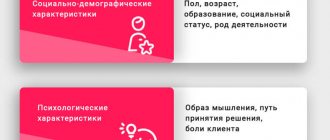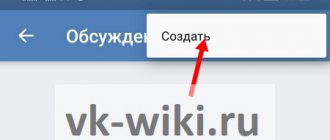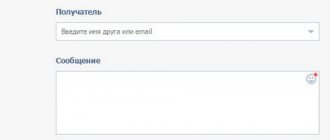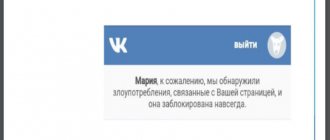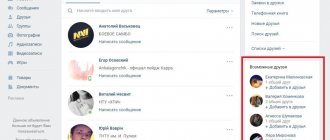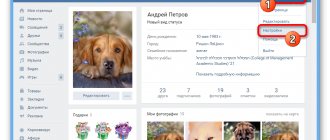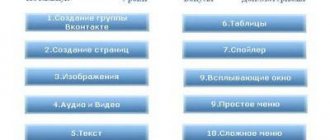We continue to write about the promotion of events on the Internet. Today we’ll talk about VKontakte. For a long time, the audience of this network was considered frivolous and insolvent. Therefore, many advertisers avoided it. But recent data suggests that the level of wealth of VKontakte users is higher than that of the Russian-speaking Facebook audience.
Promoting an event on VKontakte is similar to promoting it on Facebook: here you can also create an event page, invite friends and run ads. But VKontakte also has its own characteristics.
So, where to start promoting an event on VKontakte?
Sending out invitations to VKontakte and Facebook events (inviting)
In slang, inviting means sending out invitations to your event. As you already know, on the social networks Facebook and VKontakte you can create internal events with a description, dates, location and a link to purchase tickets. We always use this channel in addition to the main site.
But meetings on social networks are meaningless if you don’t invite anyone to them. You cannot invite (literally) users to the site, but very much so to meetings. That is, this is an additional full-fledged channel for advertising the event.
In general, an interesting story happened with events on social networks. Everywhere this channel started loudly, everywhere users were inundated with hundreds of invitations, but as a result, both Facebook and VKontakte began to seriously tighten the screws and cut promotion opportunities every year. The main idea of this functionality, according to the developers, is not to invite people to festivals, concerts and conferences with thousands of people, but to invite your friends to a birthday party. That is, this functionality is not for event organizers, but simply... We don’t even know for whom then.
As a result, by 2021, this advertising mechanic has turned into a “gray” one, since in order to invite an adequate number of people to an event, you need to resort to all sorts of tricks, tricks and use third-party automation software. Therefore, be prepared for the fact that if you work with invitations to events “in an adult way,” you are violating the rules of social networks.
Inviting on VKontakte
When you create an event on VKontakte, it always has an organizer. This is either a personal page or a community. If a personal account becomes the organizer, then you can invite only your friends to the event. If the organizer is a community, then all its members can receive an invitation.
Nowadays, creating a meeting for an event from a personal account makes little sense, because one person can invite no more than 40 friends per day. For a normal event this is very little, and progress will be extremely slow. Another thing is to invite subscribers to a public page or group (you can invite members of communities of both formats). Here, 5,000 received invitations per day are allowed, which significantly increases the effectiveness of the tool.
What does “reached” mean? Most VKontakte users have a limit on receiving invitations (this can be done in the settings). In general, of all invitations sent, only 20–30% reach the recipient. And therefore, creating an event from a personal page is absolutely pointless. For the tool to work, you need a normal base of thousands of people, because all participants will not receive invitations anyway.
If you work with invitations “in a white way” (without violating the rules of VKontakte), then ideally the invitations should be sent to your community from which you created the event. Here's a typical example. The authors of this book have a community called “Children’s Petersburg” with 68 thousand participants. They create a festival of the same name from this community and invite subscribers there. Absolutely real situation, that’s what we did. In this case, the organizer’s task is a two-step sale. First, you create and promote a community, and then invite its subscribers to the event.
However, there is one “but”. According to VKontakte, the organizer must invite all 68 thousand users manually, working like Papa Carlo. It is clear that this is beyond common sense. Especially considering that after every 20 invitations a captcha will appear on your screen - a special security code against bots. That is, you will not only press the invite button thousands of times, but also break your eyes every time entering the captcha. However, where meaning has its limits, programmers appear in adequate reality who make special software to send out these invitations by pressing just one button.
Which is exactly what happened. And since then, even sending out messages to your own community using such programs is considered “gray”. And, theoretically, this could result in punishment in the form of a ban from the event and even from the community to which the mailing is sent. However, as always happens in Russia, the idiocy of the laws is compensated by their non-implementation. Therefore, we have not yet seen sanctions for sending invitations to this community using automatic methods if the event coincided thematically with it. So far the administration is turning a blind eye to this. Bye.
We will return to how exactly to use this software. Now let's see what to do if you don't have your own community. But 95% of organizers don’t have it.
Fortunately, on VKontakte you can still change the organizing community for events. First it can be yours, then your friends, then your colleagues, then your partners, and so on. Of course, it would have been a sin not to take advantage of this. This is how the “gray” market of sending out invitations to your event from other communities on a commercial basis appeared. That is, if you don’t have your own community, you can order such a newsletter from others for money, and these costs, as practice shows, pay for themselves. And this is where the fun begins.
Not only does the VKontakte administration extremely dislike it when invitations are sent out automatically, using external software, they are generally beside themselves with commercial inviting. If somewhere in the public domain the administration sees a price list offering mailing for money, the community that posted it can be instantly blocked. And such cases have happened. Unlike software, this is much more serious. Does this mean that ordering such a newsletter is very difficult? No, that doesn't mean it. Administrators have removed their prices from public access, but you can always ask them in private messages, and they will answer. Just keep in mind that by buying an invite, you are finally moving to the dark side of the force.
When it works
At what types of events is inviting effective? First of all, these are thematic events without georeference. That is, either online events or those to which people travel from all over the country. Events where the region is important can also be recruited in this way, but here a lot of invitations will not reach your target audience.
The specificity of mailings is such that you can send an invitation only to the entire community. You cannot select a specific city (previously, VKbot used to do this, but now it doesn’t work) or a specific user interest. Accordingly, for the mailing to be effective, you must send invitations to the community, firstly, on a topic close to the event, and secondly, from the city you need.
However, very often thematic communities that sell newsletters accumulate an audience from all over the country. Urban communities that sell invitations, on the contrary, are not segmented thematically, and therefore a huge part of the received invitations goes down the drain.
Let's explain with examples. Let’s say our task is to promote a wedding exhibition in Yekaterinburg with the help of invitations. We can go two ways. The first is to order an invitation to the Sweet wedding community (the largest million-strong wedding community). However, there are few people from Yekaterinburg in this community. Our entire vast homeland is located there. And if you take into account that only 20–30% of invitations reach you, you will not receive brides from Yekaterinburg at all (or the merest amount). The second way is to order the mailing of invitations from the “Typical Yekaterinburg” community. This option is more accurate, but also not ideal. Because there are a variety of target audiences in the community. And it’s completely unclear how many brides there are.
Ideally, for your invitation to effectively promote such an event, you need to order a newsletter for the “Brides of Yekaterinburg” group, and this would be a direct hit. But there is no such community in this city yet.
That is why inviting works best for events where there is no connection to a specific city. If there is a city, then you need to look for city “thematic” groups to obtain the most effective result. If you were holding a children's event in Yekaterinburg, and not a wedding exhibition, then the community of authors of this book “Children's Yekaterinburg” would come to your aid - a typical example of a city thematic community.
Pricing
During the entire existence of this advertising channel on VKontakte, a normal market with clear pricing was never formed. Everyone knows that inviting can be effective, but no one understands how much to charge for it and how to calculate the price. As a result, the cost of mailings is set by the administrator of the lantern. I asked for as much as I wanted. Well, within reason, of course. The only thing that can be said for sure is that you will be charged more for mailing to a thematic city community than to a nationwide community with a vague topic. And the price is also affected by whether the administrator does the newsletter himself or simply appoints his community as the organizer, and then you manage on your own. If you want to save a lot, it is better to use the second option.
In concrete numbers it looks like this. Someone asks for 3,000 rubles for sending a message to a community of 200,000 people, someone wants 10,000 rubles for the same community. There is an option to pay only for received invitations. For example, 400 rubles per 1000 delivered. There is an option with payment for leads, when you pay, say, 30 rubles per o or “maybe I’ll go.” However, most often administrators charge money immediately for mailing to the entire group. Other forms are much less common. Of course, there are no specialized exchanges in this area.
We have chosen the following strategy for ourselves. We prefer to “dance” on the price of traffic to a meeting. We know that the cost of one click from targeted advertising for a specific city is in the range of 3–10 rubles. Mailing to a live, undeveloped community of 50,000 users gives 10,000–15,000 received invitations and approximately 2500–3000 clicks, if the event is adequate to the selected audience and clearly named.
Accordingly, for such advertising to be profitable, the cost of one mailing to the entire group of 50,000 people should be in the region of 2,500–4,000 rubles. Then the cost of the transition will be in the range of 1–3 rubles, which is cheaper than targeted advertising. If the community is not thematic, but simply urban, then the cost immediately drops 2-3 times and will be somewhere around 1000-1500 for 50,000 users. From our point of view, such pricing is adequate and has at least some support points. If we see a serious deviation from this algorithm and an overestimation, then we simply do not buy such an invitation.
How to order
Let's start with the fact that, due to the restrictions introduced, not all administrators sell invitations to their communities. Some are simply afraid, some do not know how to work with mailing programs, some consider this an ineffective channel and do not want to waste their time.
We had a case when we had to put together an exhibition in Moscow for 5,000 people in two weeks. At that time, there was no format for promotional posts in targeted advertising, and the only way to quickly gather an audience was inviting. We wrote to all Moscow communities asking them to sell us the service. Imagine our surprise when almost everywhere we received a refusal. The same communities that gave consent were clearly not enough. The project had to be rejected.
The ordering scheme is simple: you write a personal message to the group administrator asking if he sells mailing invitations. If it sells, then ask for a quote. If you are satisfied, you pay.
If the performer sends out invitations himself, then you then make him the administrator of the meeting, and he, in turn, makes his community the organizer and invites.
We advise you to check the progress of the work. Sometimes you come across unscrupulous performers, or the program is “buggy” and does not send anything, although it says that everything is working. Such situations happen often. So go to meeting management and open the Participants tab. There will be several sections: “I’ll definitely go”, “I’ll probably go”, “Rejected”, “Invited”. The sum of users in all these tabs will be the number of invitations that definitely arrived. All others have a ban on mailing. If you ordered a newsletter for 50 thousand users and received 10,000–15,000 invitations (20–30%), then everything is fine and no one is deceiving you. Also be sure to ask for screenshots of the program's results. She also keeps her own statistics.
Sometimes invitations are sent directly through the chain of communities, and the organizing group in the meeting constantly changes. In this case, you must definitely measure how many participants there were in each tab at the time the new newsletter started. Then you simply compare - see whether there is an increase in users or not.
And one more important point. As we have already written, you can send out no more than 5,000 received invitations per day. The larger the community, the longer the mailing will take. In a community of 10,000 users, everything can be sent out in a day. For a community of 200,000 members it will take at least a week. So when you see that the community is large, plan to send out a couple of weeks before the event. Otherwise, you simply won’t have time.
How to send invitations yourself
If you decide to send out invitations yourself, you have two options: follow the official (“white”) path and send out tens of thousands of invitations manually, as the VKontakte administration suggests, or buy special programs and automate everything. By some strange coincidence, the majority choose the second method.
At the end of 2021, with the exception of self-written programs that are not sold anywhere, everyone used the vkbutton.com plugin, built into the browser. This is the most secure software in existence (suitable only for Windows). There used to be VKbot, but now this program has gone into oblivion. And when it worked, the administration severely punished the use of invitations, since, in fact, it was a big machine for all kinds of spam, and not just an inviter. Your page instantly turned into a “dog”, even if you sent a link to it in private messages.
You download this plugin, and a corresponding icon appears in the corner of the screen, and in the meeting there is an additional “Invite group members” button. Click on this button and the program starts.
Vkbutton has paid and free versions. You must install the paid “PRO version”, since otherwise automatic captcha recognition will be impossible. Without this function, the newsletter is practically meaningless, since in order for it to continue, you will have to enter the code yourself. The cost of the paid version is 550 rubles, and you pay once.
The next program that connects directly to vkbutton is the antigate.com captcha recognition service. You go to this site, register and receive a key, which will need to be installed in a special field in the vkbutton settings. Then you deposit 500 rubles into your antigate account, and the program starts working automatically. Captcha recognition is a paid service, but extremely cheap. On average - $2 per 1000 recognitions. An amount of 500 rubles is enough for several large mailings.
Usually the newsletter is sent at night, because at this time the Internet is the most stable, and you can simply put the program to work, go to bed, and get the desired result in the morning.
Also, for mailings, you must create a special “fake” account, because this method is still “gray”, at any moment the rules may become stricter, and your account will be blocked. It's better to reduce the risks as much as possible.
Invitation exchange
If desired, inviting can be used almost free of charge if you have the necessary partnerships. When we do some kind of business event, we always have a certain pool of information partners. Very often, in exchange for tickets, we ask them to make an announcement on social networks. However, for event tickets, you can also ask partners to list their community as the meeting organizer in order to send out a newsletter. Many people agree to this.
If you have excellent relationships with the speakers (that’s what we have), then you can ask to put their communities in the organizers. This also works and gives an engaged audience.
We used this approach several times when organizing the EthnoWinter festival. We had no partners, but many ethnic groups played at the festival, and each of them had their own group on VKontakte. We agreed with the leaders of these groups, they gave us access, and we invited the most relevant audience to the event and completely free of charge.
Musicians in general should take note of this approach. Very often groups playing in the same style know each other quite well. You can completely exchange audiences by sending out invitations.
About “I’ll definitely go” and “I might go”
Separately, we want to say about two great buttons “I’ll definitely go” and “I’ll probably go”, because we are often asked whether it is possible to predict the number of real participants based on this data.
In our experience, the “Maybe I’ll go” button doesn’t mean anything at all. “Perhaps I’ll go” means I won’t go anywhere, I just poked out of curiosity. We don't pay attention to her. With “I’ll definitely go” it’s a slightly different story. The decisive factor here is the price of the event, its scale and popularity. The higher these parameters are, the more people from the “I’ll definitely go” category become real participants. Sometimes it matches 100%. In particular, all the conferences that we hold agree with this figure almost one to one. Exactly the same situation happened with Boris Grebenshchikov’s concert at the “Books and Coffee” club and the “Children’s Petersburg” festival. On average, the conversion from there is 60–80%.
However, if we are dealing with a free small event or a concert by an unknown band, the numbers change radically. Dozens of times we have seen wildly upset musicians who, based on the “100 exact participants” indicator, had high hopes for a full house, but then saw 10–15 people at the concert. It doesn't work here. Potential participants have completely different motivations. The desire to go to an event is extremely unstable. Therefore, the result is almost unpredictable.
Inviting on Facebook
Sending out invitations to events on Facebook is much easier and, to some extent, more honest and clear. This social network did not play cat and mouse, providing the necessary functionality, but at the same time not allowing the use of automation. Facebook removed the ability to invite people to an event in their community - that’s all. There is only one way to invite - you can invite 500 of your friends to the event. And not per day, but in general 500. For one meeting.
For everything else, there is official targeted advertising and posts with a link on your personal page. If you want to invite people to an event, pay.
However, we are in Russia, and therefore if you use your head and put in a little effort, then, of course, these restrictions can be circumvented. But more on that a little later, for now let’s go through all the “white” possibilities.
Unlike VKontakte, you can not just invite 500 of your friends, but select them according to certain criteria, which can significantly improve the quality of your audience.
Let's say you have 4,500 friends on your Facebook account. And you only want to attract those who will truly be interested in your event. What does the social network suggest you do for this?
First, you will first be asked to call those with whom you interact most frequently. This list is generated by the system itself. It's called "recommended". Let's be honest: the list is compiled really competently. Secondly, you can immediately invite friends only from your city. In our case, choose those who live in St. Petersburg. Thirdly, you can invite those who participated in past events organized by you or events in which you participated, but were not the organizers. Moreover, you can invite both those who attended the event and those who were only interested in it (if we draw an analogy with VKontakte, then both those who clicked “I’ll definitely go” and those who clicked “I’ll probably go”). Fourthly, and this is perhaps the coolest setting, you can invite friends who are members of groups in which you are also a member. The logic here is clear: if you are in the same group, then your interests coincide and the invitation will be relevant. Fifthly, you can invite people from your database. In particular, postal or telephone.
We, first of all, use selection by specific groups and consider this the most accurate invitation algorithm. For example, when we organized the “Severe St. Petersburg SMM” conference, we invited to the event those who were members of the “SMM-Tusovochka” and “Websarafan” groups with us, that is, entrepreneurs and SMM specialists.
What to do after you have invited 500 of your friends? It is clear that this is not enough.
We proceed as follows. To begin with, I must say that in our projects there are always two or three organizers. That's why each of us invites our friends. And this is already 1500 invitations. Moreover, they are configured according to clear criteria, unlike VKontakte.
Then we have team members who have friends from our target audience. You can also ask them to send a newsletter. Then we just have good friends who don’t mind inviting their friends. And most importantly, we have favorite speakers who, if we ask them, do not refuse to invite 500 of their own. Thus, the sample can be increased to tens of thousands of people. And this is already an impressive figure.
The selection can also be expanded through information partnerships. If you understand that your partners have your target audience as friends, you can always ask to invite them in exchange for a free ticket.
All of the above are “white hat” methods of inviting people on Facebook. As you understand, the main difficulty is to gather the maximum number of people who have 500 people in your target group as friends.
What about other, not entirely honest, but working methods? Actually, everything is very simple here. We may not be looking for any partners, friends, or co-organizers. We can simply create a network of “fake” Facebook accounts and invite your target audience as friends, and then use this base to invite people to events. The only point is that it is advisable to maintain accounts. That is, periodically post some posts or photos. They should look human so that no one suspects that they are a bot. The friends of these accounts should not overlap so that the audience is as unique as possible.
It is best to gather the audience for these accounts from thematic groups and public pages. You need to carefully review how well the account matches the portrait of your target audience, and only after that add the person as a friend. We will touch on this topic in detail in the section on the event system.
An even more current state of affairs with sending out invitations can be found in this video:
Tags:
VKontakte, Facebook, Invitations, Newsletter, Inviting
Useful tips
Before we look at ways to invite strangers to a VKontakte group, we will share the necessary recommendations so that the process leads to an impressive result.
- To increase the number of subscribers, it is not enough to attract your friends to the public. Even if they join the mailing of applications to their contact lists, the desired number of participants will still not be reached. But there will be a risk of being blocked - if in a day a critical number of users mark your account as a source of spam, the first time you will be banned for several hours. When this happens again, the community will go to the block forever.
- Before sending an invitation to a VKontakte group, prepare the text of the message - it should be concise, catchy, and not banal.
Give a couple of catchy arguments to interest a potential subscriber. Read articles with tips on writing short messages that work as a call to action.
And now we invite you to find out how to invite a person to a group on VK if there is no “Invite friends” button - this is possible if you chose the “public page” variety when creating a community. Just temporarily move the page to a group: the desired command is under the avatar, the very last one in the list. You will need to confirm the action, enter the code that will be sent to the mobile phone linked to the account of the page owner.
How to create a VKontakte meeting
Today we will tell you how you can create a meeting with friends on the VKontakte social network, we will provide you with complete detailed instructions with screenshots on how to do this.
If you plan to spend time in the company of close friends, work colleagues or classmates, then there is an “Events” section for this. If you don’t know how to create a VK meeting, then today’s article will talk about how to do it.
How to create a VKontakte meeting
Contents of the article (navigation)
In order to create a meeting with your friends, you need to perform a couple of simple steps that will not take up much of your time. Let's get started!
- Open your personal page on the VKontakte social network;
- On the left side of the screen you will find a section called “My Groups” or “Communities”;
- The publics you are subscribed to will appear in front of you, but in order to notify your friends about the upcoming meeting, you need to click on “Create a community”;
- A window will appear in front of you where you must select the name of the upcoming celebration and click on “Event”, and then “Create a community”;
- Then a list will appear where you must select a name, location, indicate the page of an already created group or your account;
- Having checked everything you need, double-check that you have done everything correctly, and then click on “Save”;
- After that, refresh the page.
As you can see, there is nothing complicated in creating an event. It's worth noting that you can delete a community after the celebration has ended.
Why can’t I add a friend to a meeting on VK?
If you can’t add any of your friends to the meeting, don’t worry, we’ll tell you what to do.
If you cannot add a friend to a meeting on VK, it means that he has prohibited inviting himself to events in his privacy settings. Just write him a message and ask him to temporarily remove this restriction.
How to arrange a meeting in VK?
After you have created an event to which the people you invite should gather, you need to design the public in some interesting way. If you don’t know where to start, then we are ready to help you with this.
- In order to invite friends to the holiday, click on the “You will go” item, and then click on “Invite friends”;
- A window with your friends will appear in front of you; to notify one of them about the upcoming holiday, click on “Send an invitation”;
- Then click on the avatar to put a colorful photo on the main photo that can attract the attention of guests.
It is worth noting that the maximum number of invitees is 40 people. So, you will have to think carefully about who should be invited and who not. However, if you want more people to attend your meeting, you can simply message them.
Try to describe the time and place of the meeting as accurately as possible to avoid misunderstandings.
Now you know how to create a VKontakte meeting. As you can see, there is nothing complicated about this. We hope that our article helped answer all your questions. All the best and good luck!
allvk.net
